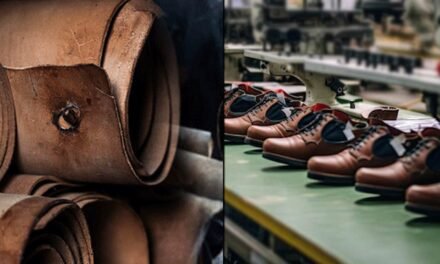India’s leather industry is proactively preparing for upcoming changes in US import regulations, which are expected to impact the flow of leather goods into one of its largest export markets. With the United States being a key destination for Indian leather products—including footwear, accessories, and garments—these new regulations present both challenges and opportunities for Indian manufacturers and exporters.
The upcoming changes in regulations are focused on sustainability, product safety, and ethical sourcing. US authorities are increasingly prioritizing environmentally friendly and socially responsible manufacturing practices. These regulations aim to ensure that imported leather products meet stringent environmental standards related to tanning processes, the use of chemicals, and sustainable sourcing. Additionally, the US is expected to enforce stricter rules around labor rights, including the use of fair labor practices in the production of leather goods.
Adoption of Sustainable Practices: Indian leather manufacturers are increasingly moving towards eco-friendly tanning processes like vegetable tanning and reducing reliance on harmful chemicals such as chromium. This aligns with the growing global demand for sustainable leather goods and will help Indian exporters meet US regulations requiring products to be made with environmentally conscious methods.
Ethical Sourcing and Transparency: The Indian leather industry is working to improve traceability in the supply chain, ensuring that raw materials such as hides and skins are ethically sourced. Blockchain and other tracking technologies are being integrated to verify the sustainability and ethical practices involved in the production process. This transparency is crucial to meeting US import regulations and boosting consumer confidence in Indian leather goods.
Upgrading Quality Standards: To maintain competitiveness in the US market, Indian manufacturers are investing in quality assurance, certification programs, and adopting international standards for leather production. This includes meeting guidelines for product safety and chemical content to ensure that Indian leather goods are compliant with US regulations on consumer protection.
Training and Education: The Indian government, along with industry associations, is providing training programs to help leather manufacturers understand the evolving US market requirements. These programs focus on the importance of sustainable production and how to meet new regulatory standards, ensuring that manufacturers can continue to export their products seamlessly.
Innovation and Product Development: India’s leather sector is embracing innovative production techniques and exploring new leather alternatives, such as plant-based leather and recycled leather, to cater to the growing demand for sustainable and cruelty-free products. This aligns with the shifting preferences of US consumers who are increasingly prioritizing eco-friendly and ethical goods.
As the US import regulations evolve, India’s leather sector is adapting by strengthening its sustainability practices, improving transparency, and ensuring compliance with ethical sourcing standards. These proactive efforts will not only ensure that India remains a key player in the US leather market but also position the industry as a global leader in responsible leather production.







